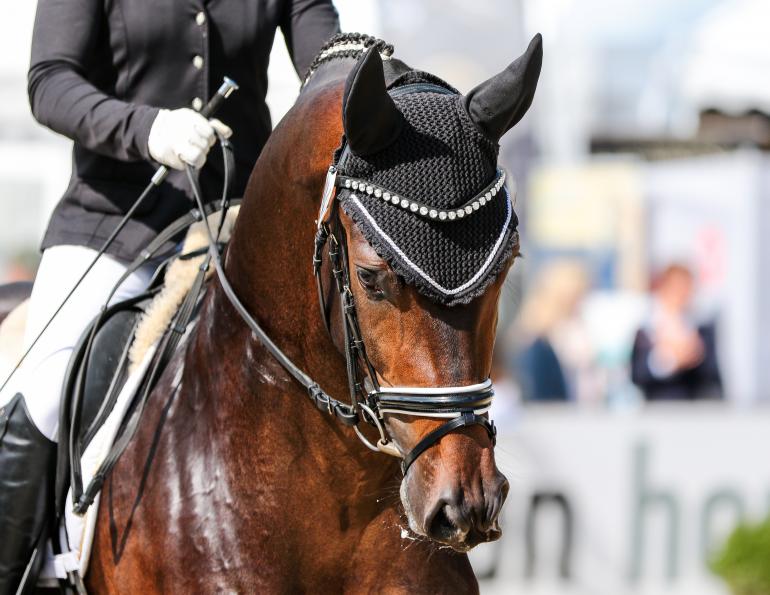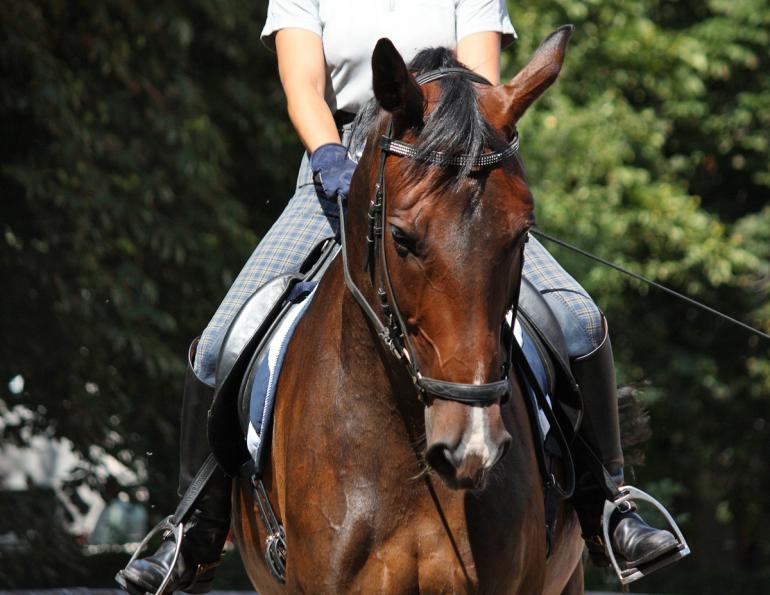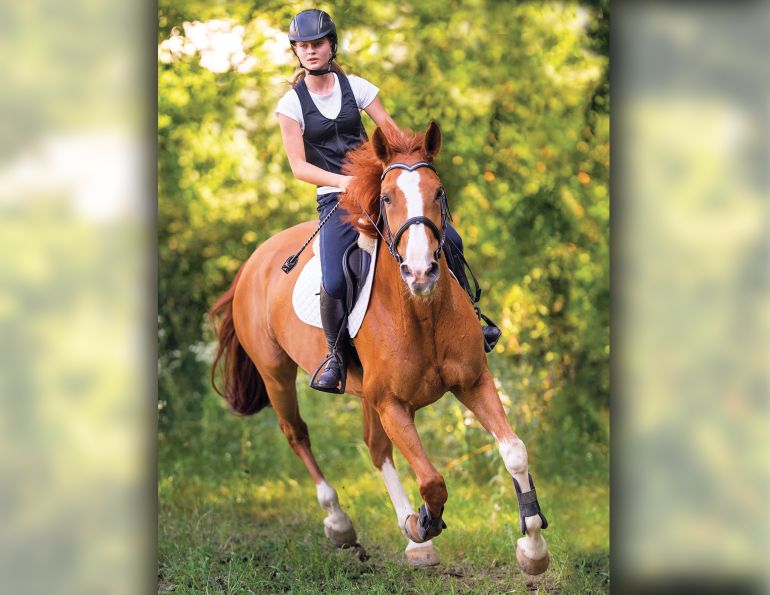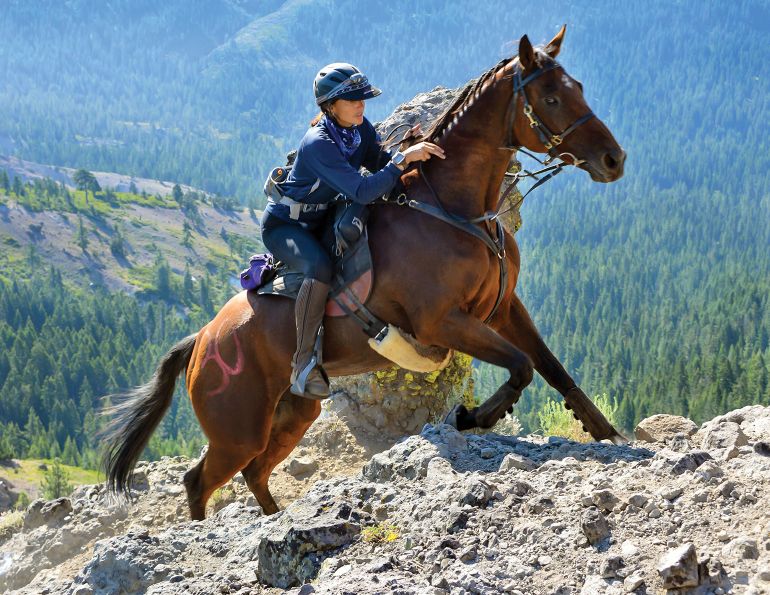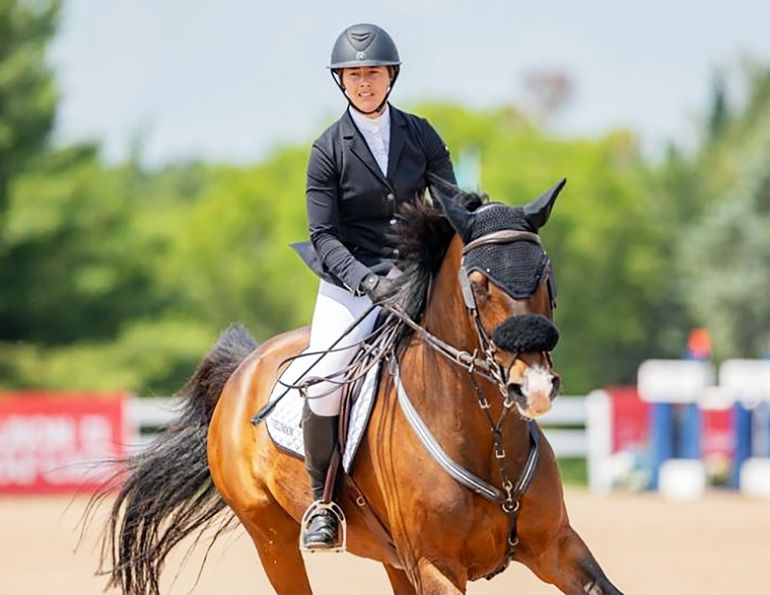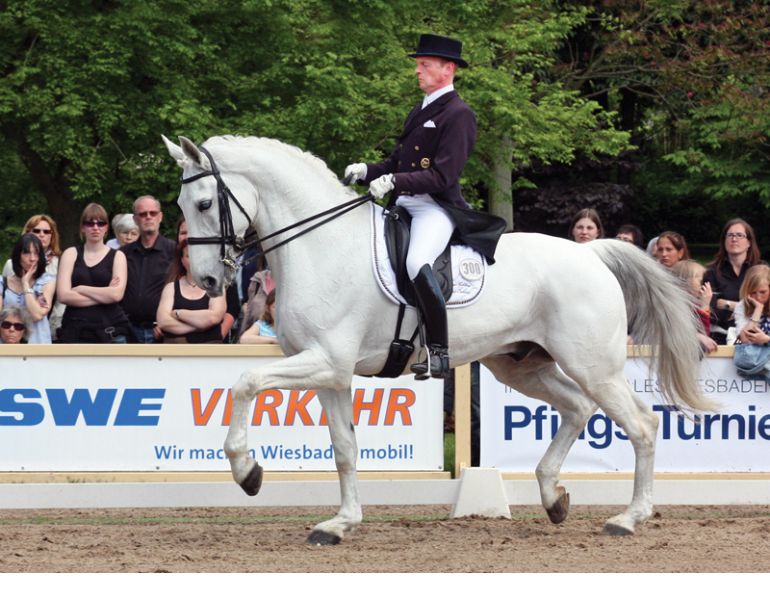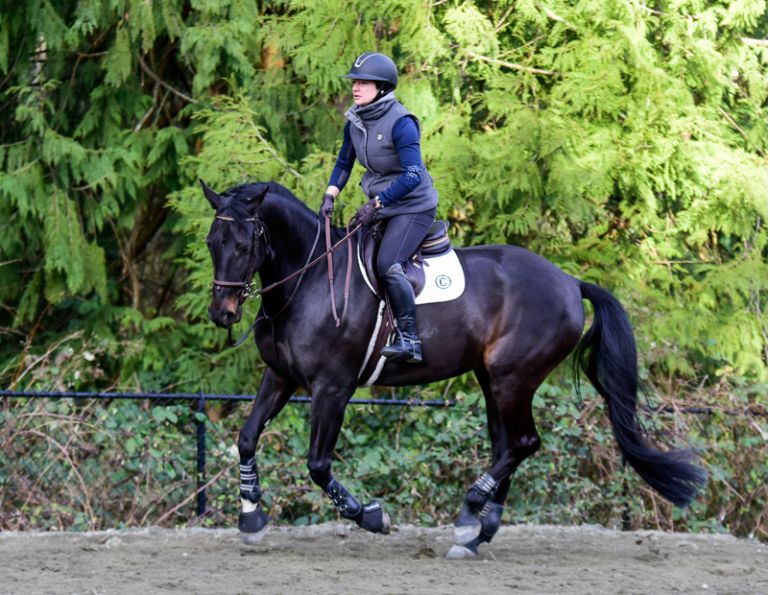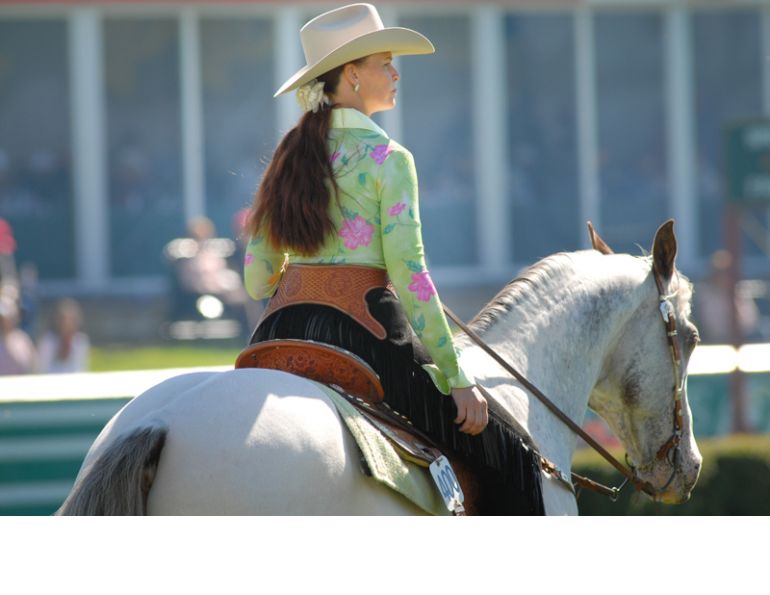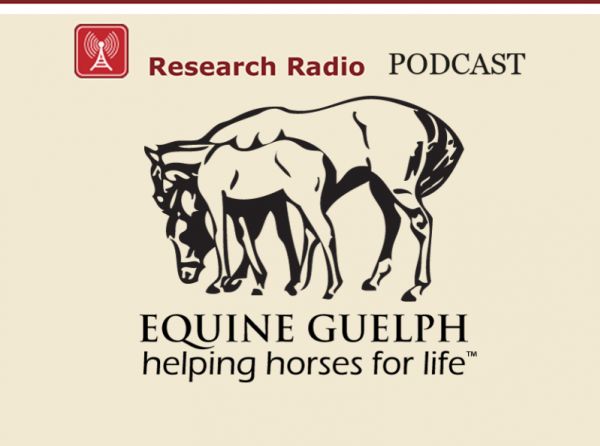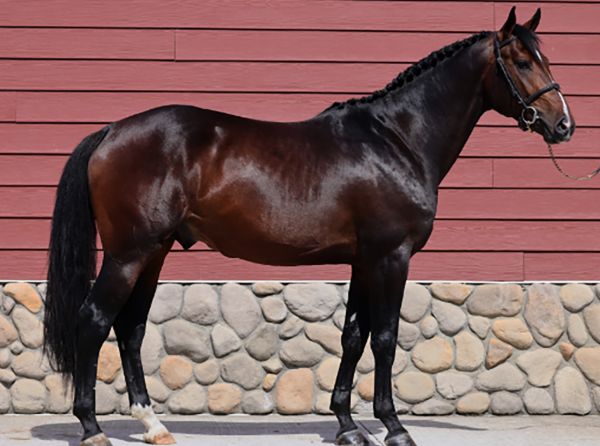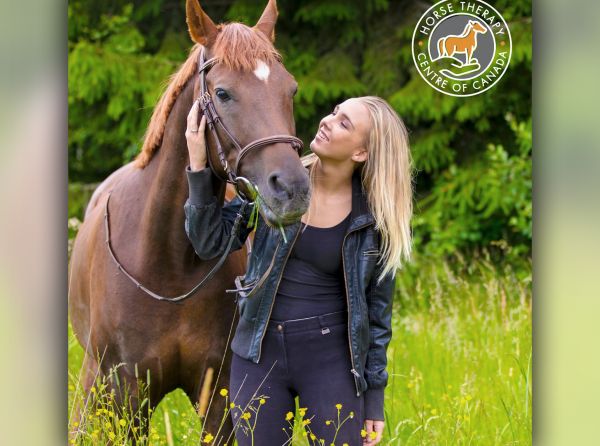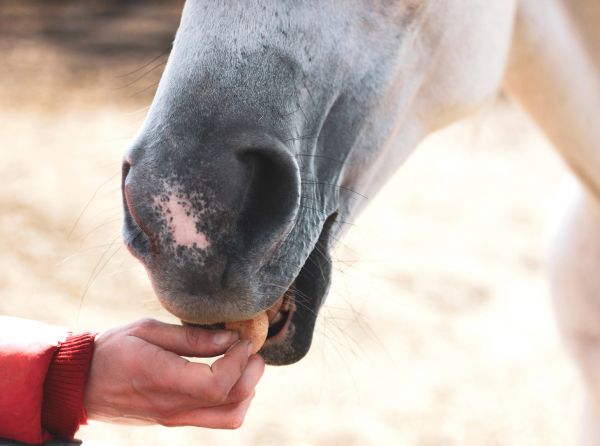By April Clay, M.Ed., Registered Psychologist
Everyone wants to get fit. We all love that feeling of strength in our bodies, and the increased energy it brings. The only problem is getting there; we want it now. It’s the same thing with mental fitness, it sounds great, but it seems like such an uphill climb. If you want a jump start, try the following five-week program. By the end, you’ll be sporting a few new mental muscles you can show off at your next competition.
Week 1 — Clean House.
All of us have unresolved issues running through our minds. They have a tendency to build up like dust bunnies under beds and become monstrous before you know it. So every once in a while it’s a good idea to look carefully and see what has been sitting around in the back of your mind for a while, taking up your precious energy and time.
Let’s take the example of Heather, a rider who had an endless stream of thoughts flowing through her mind most of the day. Unfortunately those thoughts didn’t stop when she rode. Upon closer inspection, she found these thoughts were often about problems she was trying to solve or tasks she had to complete. Heather had to learn to clear her head by learning how to organize her thoughts. Whenever something started repeating in her head, she started to ask herself some key questions. Was this issue something she could do something about, something she could control? If so, she encouraged herself to come up with one action item. Then the deal was she had to set it aside. If it was something which was out of her control, she cued herself to “garbage it” and imagined herself tossing a crumpled up piece of paper over her shoulder.
What is rattling around in your mind that needs attention? This week, practice catching some of those thoughts and finding a place for them.
Week 2 — Catch on to your bad habits.
As you train, notice when you habitually fall into negative thought patterns (such as when you are tired, have a poor lesson, encounter challenges, or make mistakes). Then begin to decide how you will replace your default thinking. Once you do this, you will have to practice to create new habits. Think about training your thoughts for specific situations (how you respond to a frustration for example).
Jan is a rider whose worst “thinking” habit was that of having hope. Before every ride she began to notice herself repeating “I hope it goes well today,” or “I hope I can stay on and do a good job.” Hope is great, in the right context. But for Jan, it became a kind of mantra that intensified her own sense of helplessness. Every time she repeated the phrase “I hope” it sent a message to herself that she didn’t know what to do. Unfortunately, this message came through loud and clear, and she often did nothing. So, she began to replace “I hope” with “I know.” Jan would say “I know I am going to work on keeping my pace consistent today,” or “I know how to be a good student and learn, so that is what I will focus on.” She found this kind of replacement thinking enormously helpful, and her confidence began to build.
This week, stake out your bad habits. Maybe you tend to call yourself names when you think you’ve failed at something. Or perhaps you always focus on the worst that can happen, to avoid being disappointed. Make it your mission to find one bad thought pattern and come up with some replacement thoughts, and then practice, practice, practice.
Week 3 — Resilience training.
Being mentally tough does not necessarily come naturally. How easily do you bounce back after a setback? If you make a mistake in competition, is it the end of your ride? If someone knocks you down, can you get yourself back up? If you are not blessed with the most talented of mounts, can you still give your partnership 100 percent?
Improve your resiliency by taking the time to test it regularly. If you only allow your practice to be focused on perfection, you lose something. Mistakes and mishaps are unavoidable, so why not plan for them? If you ignore them, they surprise you come show time — maybe even stop you in your tracks.
Karen is a rider who discovered her biggest weakness was the habit of thinking her mistakes were failures. Then she gave up. Karen decided to change the way she perceived mistakes to recognize them as an opportunity to learn. Each time she made an error, she first asked herself if it was the kind of thing she could have prevented. If it was, she decided to move forward and try it again. If it was the kind of mistake she did not know how to correct, she made it her job to find out how so she could learn and improve as a rider. This approach made her feel much more in charge of her riding. Mistakes no longer stopped her in her tracks, but lead her to become a stronger, more competent rider.
The key for this week is to practice tough responses to your toughest situations. Create a picture in your mind’s eye of you as a mentally tough competitor. Now ask yourself, how would this person deal with this challenge? Then do it. It may also be helpful to consult with your trainer or someone else you trust about your skills in this area.
Learn to use your reset button. If something goes wrong, take a moment to “reboot,” and get yourself and your mount back on track. Photo: Robin Duncan Photography
Week 4 — Learn to use your reset button.
When training becomes difficult, a great opportunity emerges to practice “re-booting.” Pause (mentally), take a breath (maybe with an image like breathing low through your saddle for a moment), and then resume your ride with no judgments about how you’re doing; only focusing on what you are doing. Go back to the basics of the task.
This is exactly what Ken did to help him get over his frustration about not learning fast enough. He would think “re-boot,” stop his mind, exhale, and direct his attention to what he had to do next. This is a wonderful skill to develop for the show ring.
There will always be unexpected difficulties and events to knock you off track. But instead of staying off track, you can practice restarting.
This week, practice your reboot strategy. Think of your mind as a computer that sometimes needs to restart in order to work most effectively.
Week 5 — Practice narrowing your focus.
You’ve got what seems like a million variables to attend to during a ride. But which do you really need? The keys are to keep it simple and relevant. Putting your mind on your riding form could be useful, or on your horse’s movement. Negative thoughts don’t do anything to help or direct you, and comparing yourself with other riders is draining and counterproductive.
Kelly had a nasty habit of trying to juggle multiple aspects of her ride. Where is my leg? Am I going too fast? How straight is the line I’m riding? To her coach, she often looked frenetic and disorganized. So Kelly learned to choose one thing to focus on at a time. She would then label her focus with a key word. Around the corners she would repeat “balance, balance” and down the lines “straight, even.” She soon recognized she could change her focus, as long as she kept it simple and relevant.
This week, figure out where to put your focus while you ride, and practice it in training. You will not only quickly figure out what kinds of focuses are most helpful, but you will be developing your concentration abilities along the way.
To read more articles by April Clay on this site, click here.
Main photo: Robin Duncan Photography - Work on strengthening your mental muscles, and you will find yourself better equipped at your next show.



